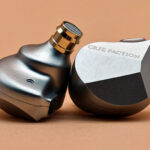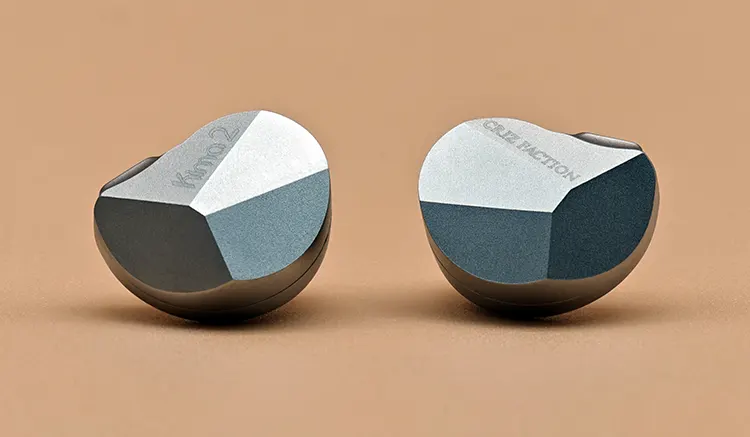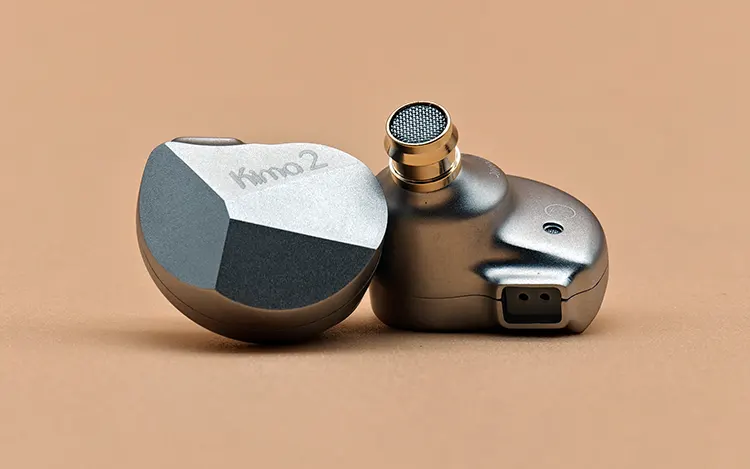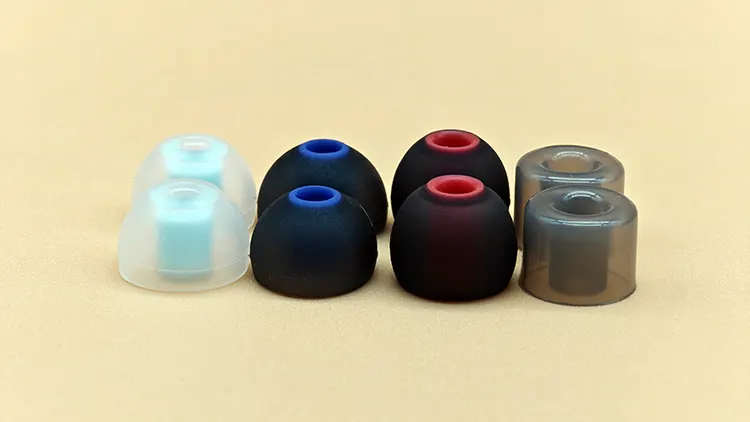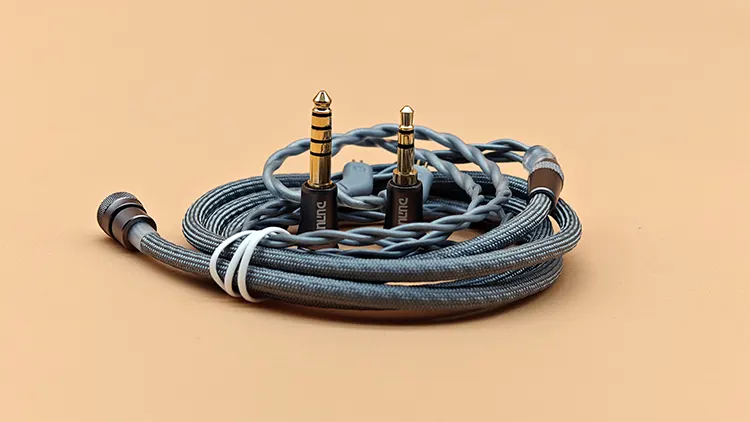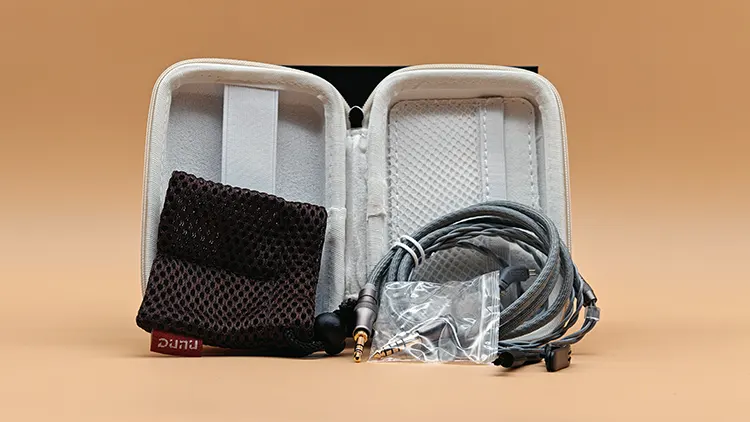In today’s feature, Kurt reviews the DUNU KIMA 2, a second-generation dynamic driver IEM with a Q-Lock interchangeable plug system cable. It is currently priced at $107.99 with an SRP of $119.99.
Disclaimer: This sample was sent to me in return for my honest opinion. Headfonics is an independent website with no affiliate links or services. I thank HiFiGO and DUNU for their support.
You can click here to learn more about the DUNU gear we have previously reviewed on Headfonics.
This post follows our scoring guidelines which you can read in more detail here.
DUNU has earned a reputation for delivering innovative, high-quality audio gear, so the KIMA 2 has a lot to live up to in order to be considered a worthy successor to the original KIMA.
Combining a striking design with enhanced driver technology similar to the FALCON Ultra, the $119.99 SRP KIMA 2 seeks to build upon the popular limited edition VERNUS IEM tuning.
The KIMA 2 promises to deliver a clean, balanced, and engaging sound experience with its next-generation DLC composite diaphragm dynamic driver. Does the KIMA 2 set a new benchmark for single dynamic driver IEMs?
In my full review below, I find out how it performs and competes against the award-winning AFUL Explorer and the TinHiFi P1 Max II.
Features
The DUNU KIMA 2 is a single dynamic driver universal IEM. It features a next-generation DLC composite dome diaphragm dynamic driver with a dual-cavity acoustic structure to complement the driver.
DUNU claims this configuration enhances the bass control and the mids’ accuracy to create a well-rounded sound signature.
Additionally, the KIMA 2 builds upon DUNU’s VERNUS Sound Mastery target curve, refining the tuning approach to try and create a richer and more dynamic sound signature.
The DUNU KIMA 2 has an impedance of 32Ω @ 1kHz with an SPL of 108 dB/Vrms making it a reasonably efficient IEM but not a super sensitive monitor by today’s standards.
Design
The DUNU KIMA 2 impresses with its sleek design, showcasing a minimalist geometric aesthetic that balances sharpness with elegance. Its brushed metallic finish enhances its premium look, while the compact size ensures it remains visually appealing without being overly bulky.
The nozzle is slightly elevated with a gold finish and a subtle hump underneath aids in securing a proper fit. Its white matte finish adds a touch of elegance, but the limited edition emerald, green variant takes the visual appeal to another level with its reflective, lustrous surface.
Branding details such as “KIMA 2” on the right earpiece and “Criz Faction” on the left are subtly etched, maintaining a clean and professional look. The “L” and “R” markers positioned next to the vent under the 0.78mm connectors make identifying sides effortless.
The sharp and angular edges of the faceplate provide a striking visual identity. However, the edges are angled in a way that avoids discomfort during normal use, aligning with its refined design philosophy.
Comfort & Isolation
The DUNU KIMA 2 offers an overall rounded and ergonomic design, making it comfortable for most users during extended listening sessions. Its relatively small size ensures a secure fit, especially for individuals with smaller ears.
Selecting the right ear tips is crucial to achieving optimal comfort, as improper tips may cause the IEM to poke the ear. When paired with well-fitting tips, the KIMA 2 provides a snug fit without excessive pressure.
The shell’s material absorbs temperature easily, which can make it feel cold in chilly environments or warm after prolonged use. This characteristic may require some adjustment depending on the surrounding conditions.
In terms of isolation, the KIMA 2 performs well, effectively blocking out external noise for uninterrupted listening. However, its design makes it less ideal for sleeping, as constant movement in bed can cause its sharp corners to press against the ear.
Tips
The DUNU KIMA 2 impresses with its assortment of ear tips, showcasing DUNU’s attention to user preferences. I’m happy to see a variety of options included, allowing users to tailor comfort and sound performance to their liking.
The Red Tips feature a long stem and medium bore, providing a secure grip but can become uncomfortable over time due to their hard and pointed design. These tips excel at containing the bass, delivering a tighter and more controlled low-end response.
The Dark Blue Tips, with their short stem and medium bore, prioritize comfort and sit deep inside the ears. However, their weaker grip can reduce bass impact and introduce muddiness to the midrange, affecting overall clarity.
DUNU’s Candy Tips combine a long stem and medium bore with a non-sticky texture, offering a secure fit and great comfort. They enhance perceptible clarity, making them an excellent choice for those seeking a clean sound signature.
Lastly, the DUNU S&S Tips stand out with their wide bore and unique filling design, gripping the ears securely while boosting clarity. Their design, however, causes the IEM to lift upward, making the sharp edges of the KIMA 2 hit and poke my ears.
Stock Cable
The DUNU KIMA 2 comes with a four-core hybrid cable comprising a blend of monocrystalline copper and silver-plated monocrystalline copper.
Wrapped in shock-absorbing nylon, the cable is durable, tangle-resistant, and free from memory retention. This design prevents the cable from feeling cheap or cumbersome during use, contributing to a good handling experience.
The cable features DUNU’s versatile Q-Lock Mini interchangeable plug system, allowing you to switch between 3.5mm single-ended and 4.4mm balanced plugs. This system enhances compatibility, making the KIMA 2 adaptable to various audio sources and setups.
Attention to detail extends to the 0.78mm terminations, which include clear “L” and “R” markings for easy and error-free connection with the IEMs.
While the build quality of the cable is undeniably top-notch, the chin slider could be easier to adjust. This minor nitpick, however, does little to detract from the overall high-end quality of the cable.
Packaging & Accessories
The unboxing experience of the DUNU KIMA 2 is also impressive. The outer box features beautiful, colorful artwork with shades of purple, white, and pink on the front, while the back highlights the technical specifications.
Sliding off the outer sleeve reveals a sleek black box with the DUNU logo prominently displayed. Upon lifting the box upward, you’re greeted with a delightful standee of the artwork girl, adding a collectible touch to the packaging.
The standee is removable and can be built using its plastic base, making it a decorative item. Beneath this display lies the IEM itself, perfectly nestled in a foam container.
Under the IEM compartment is the carrying case, a white textured pouch etched with the DUNU logo. Inside the case, you’ll find the cable, an assortment of ear tips, 4.4mm and 3.5mm terminations, an IEM cleaning brush, a clip, and a small carrying pouch.
The carry pouch features a fishnet design with a divider inside, which adds versatility but leaves its usage slightly ambiguous as an IEM pouch.
Sound Impressions
Bass
The DUNU KIMA 2 delivers a bass experience that emphasizes refinement and texture rather than sheer quantity. Sub-bass lacks the depth and extension needed for a fully immersive low-end but maintains a level of presence that keeps the sound grounded.
Mid-bass performance offers a satisfying punch, providing rhythm and impact without overwhelming the rest of the frequency range. Bass detail retrieval is impressive, capturing subtle nuances and textures that add depth to tracks.
However, noticeable bass bleed into the midrange slightly affects overall clarity, reducing the separation between frequencies. This minor drawback can make the presentation feel less clean, especially in bass-heavy tracks.
Despite these limitations, the bass remains balanced and enjoyable, striking a harmony between punchiness and precision. Its textured approach adds subtle energy without overpowering the rest of the signature.
Mids
The midrange of the DUNU KIMA 2 is rich and warm, delivering natural timbre and lifelike vocal presentation. Both male and female vocals sound full-bodied and expressive, showcasing the IEM’s ability to highlight tonal accuracy.
Details in the mids are well-articulated, capturing vocal nuances and subtle instrumental layers with clarity. Instruments in this range maintain a distinct presence, blending smoothly without overpowering each other.
Bass bleed into the mids slightly softening their sharpness, but the presentation avoids feeling overly congested or muddy.
The KIMA 2’s midrange strikes a balance between smoothness and clarity, ensuring that vocals and instruments remain a focal point in its sound signature.
Treble
The treble performance of the DUNU KIMA 2 is smooth and inoffensive, avoiding harshness or fatigue. Detail retrieval is above average, allowing finer elements such as cymbals, chimes, and backing vocals to be heard clearly.
While treble extension is good for a single dynamic driver, it lacks the sparkle and air that would elevate the soundstage’s sense of space. This slightly reserved approach ensures a more laid-back presentation but limits excitement in the upper frequencies.
Sibilance is well-controlled, even in challenging tracks, which makes the treble sound clean and refined.
Staging & Dynamics
The DUNU KIMA 2 offers a compact soundstage with limited width and depth, focusing on an intimate and forward presentation. This staging provides clarity for vocals and instruments but sacrifices a sense of expansiveness and layering.
Imaging is clear, although it struggles with precise placement, as sounds often cluster within the center of the stage. The spatial representation feels centered, leaving little room for dimensionality or holographic effects.
The separation between instruments and tones is well-executed, ensuring clarity even in busy and complex tracks. The controlled separation avoids congestion and allows individual elements to stand out effectively.
Dynamics are strong, maintaining consistent performance across varying volumes without distortion or imbalance. Subtle shifts in volume and tonal emphasis remain cohesive, ensuring a stable and reliable sound profile.
Click on page 2 below for my recommended pairings and selected comparisons.


